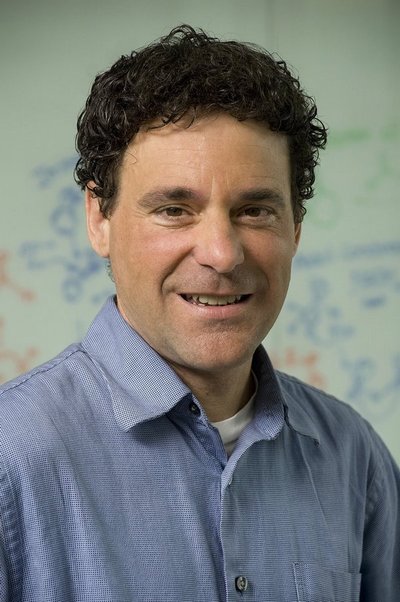October 21, 2010
Molecular Engineering and Science Institute to address energy and medicine; UW bioengineer named director
What if doctors had tools to pinpoint the location of disease inside the body’s cells? What if window panes captured solar energy that could be used to power homes? Molecular engineering, sometimes called molecular manufacturing or molecular systems, is very small-scale construction made possible by advances in chemical synthesis that allows for this new class of nanotechnology.
Engineering custom molecules is a revolutionary change that promises to advance a wide range of fields, and the UW has established a new Molecular Engineering and Science Institute focused on medical and energy applications. Pat Stayton, a UW professor of bioengineering, has been named the institute’s first director.
“Pat Stayton is the right person for the job,” said UW College of Engineering Dean Matt O’Donnell. “His world-class research in molecular drug delivery systems, coupled with his passion for teaching and outreach, make him the perfect founding director.”
The institute will be housed in the Molecular Engineering and Science Building now under construction on the UW campus.
Rather than combining existing molecules, engineers and scientists can now design individual functional molecules, or systems of molecules, on a computer and then create them according to plan. They can also synthesize machines where each working part is an individual molecule. The approach is to design molecular systems that can sense their surroundings and act accordingly. Such tiny systems could, for example, provide the working parts for flexible, cheap, efficient solar cells, or recognize levels of a certain substance in the body and release drugs only when necessary.
Over the next year Stayton will assemble clusters of UW faculty working on the institute’s two focus areas, clean technology and biotechnology.
Stayton earned his bachelor’s degree in biology from Illinois State University and his doctorate in biochemistry from the University of Illinois. He joined the UW in 1992 and now holds the UW’s Washington Research Foundation endowed chair in bioengineering. He directs the UW’s Center for Intracellular Delivery of Biologics, founded in 2009 with a $7.2 million grant from the Life Sciences Discovery Fund. He is a fellow of the American Institute for Medical and Biological Engineering and has been recognized by his department for his teaching and mentorship activities.
On the commercial side, Stayton is a co-founder of Seattle-based startup PhaseRx, which creates genetically based medical drugs using large molecules to transport therapeutic proteins into cells.
“We are very excited to kick off the molecular engineering initiative that will bring molecular science and engineering research to bear on major societal needs for clean technology and biotechnology,” Stayton said.
The 90,000-square-foot Molecular Engineering and Science Building, just inside the west entrance to campus, is expected to open in 2012 and will largely house graduate students and postdoctoral researchers.
“The research space itself is built largely without walls to catalyze new interdisciplinary collaborations that we hope will spark technology breakthroughs in sustainable energy and medical therapies,” Stayton said. “It will also train a new generation of scientists and engineers who can work across technical borders to develop these new technologies in Seattle and across the country.”
The new institute will involve faculty and students from the College of Engineering, the College of Arts and Sciences and other disciplines.
“This collaborative space will allow our scientists and engineers to work together to create truly cutting-edge solutions to current problems,” said Ana Mari Cauce, dean of Arts and Sciences.
Stayton will launch an academic program that allows UW undergraduate and graduate students to earn a degree with a molecular engineering focus, create an academic structure that facilitates research collaborations and work with the researchers who will move into the lab.
“We hope to establish new, externally funded centers of excellence that bring together world-class faculty working at the forefront of chemical and biological science with leading engineering faculty who are developing novel medical applications and sustainable energy and materials technologies,” Stayton said.

